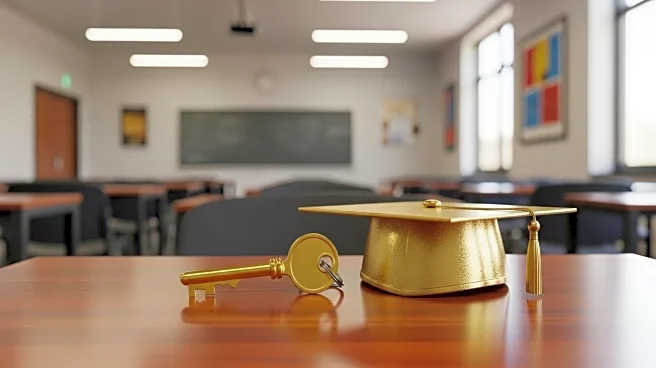What's Happening?
New federal loan caps set to take effect next summer could force a significant number of graduate and professional students to seek private loans to finance their education. The caps, part of the One Big Beautiful Bill Act, limit federal borrowing to $20,500 or $50,000 per year depending on the program, with total limits of $100,000 for graduate programs and $200,000 for professional programs. This change affects students in costly fields such as medicine and dentistry, where many exceed these caps. The shift to private loans, which often have higher interest rates, could make advanced degrees financially unattainable for some students.
Why It's Important?
The new loan caps could have a profound impact on higher education, potentially limiting access to advanced degrees for students who cannot afford private loans. This may exacerbate the student debt crisis, as private loans typically come with less favorable terms than federal loans. The policy change could disproportionately affect low-income students who struggle to secure private financing due to credit issues. The caps may also pressure educational institutions to reconsider tuition costs, as students face increased financial barriers.
What's Next?
The Education Department will begin rule-making processes to implement the loan caps, which may include discussions on which programs qualify for higher borrowing limits. Stakeholders from various fields are advocating for their programs to be considered professional degrees to access higher caps. The private lending market may need to adapt to accommodate increased demand, potentially exploring new financing models. Policymakers may face pressure to address the unintended consequences of the caps, including potential reforms to make private loans more accessible.
Beyond the Headlines
The shift towards private loans raises concerns about the long-term financial burden on students, potentially affecting career choices and economic mobility. The policy change may influence the landscape of higher education, prompting institutions to evaluate cost structures and financial aid offerings. The reliance on private loans could lead to increased scrutiny of lending practices and calls for regulatory changes to protect borrowers. The situation underscores the need for a balanced approach to addressing student debt while ensuring access to education.











